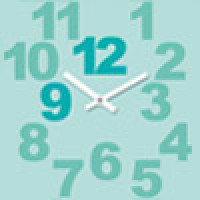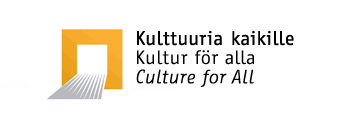
Call for oral communications and call for posters
INTERNATIONAL SYMPOSIUM
DISABILITY
CULTURAL AND ARTISTIC EDUCATION
People, groups, methods
Paris, June 2013
Presentation
Despite progress in legislation and institutional efforts permitting an increase in material and architectural accessibility to places, access of all disabled persons to artistic activities can still be developed further. Indeed, in addition to the social environment, supervision, geographical location, financial resources and autonomy of the individual, education in tastes and interests also plays a major role. Artistic and cultural education is thus essential in implementing the rights of disabled persons to access to cultural and artistic activities.
Artistic and cultural education has difficulty in overcoming the separation between the cognitive and sensory areas in the sensory field itself, and too often remains limited to a disciplinary approach supposedly reflecting the variety of our senses. Is it possible that different approaches to artistic and cultural education for disabled children and disabled young people, often designed in a more global and transversal perspective, can help us rethink our approach to artistic and cultural education for all?
It is important to examine the way the different answers provided to disabled persons constitute vectors of innovation and renewal of artistic and cultural education practices for all participants? This matter will be discussed from three angles:
1.In light of the law of February 11, 2005, artistic and cultural education is to play a special role for disabled pupils. How can artistic and cultural education be reconciled with necessary social inclusion? Does the success of a disabled pupil in an ordinary school require sacrificing cultural activities, or on the contrary, does it foster participation in those activities?
2.Artistic and cultural education can also be found outside the classroom. It takes the form of accommodating disabled children in places where artistic and cultural activities are conducted such as conservatories, museums, landmarks, schools where dancing, theatre and fine arts, etc. are taught. How is artistic and cultural education to be carried out in actual practice? What are the appropriate pedagogical and didactic methods to meet the needs of disabled children?
3.Lastly, we believe that it would be useful to examine the changes and professional and educational innovations generated by artistic and cultural education related to working with groups with special needs. What new functions and professions are emerging in this context? What types of training, and what skills are being built within this new profession, i.e. the artistic and cultural education of disabled children? What innovative contributions and revised professional practices can derive from accessibility for people with special educational needs? How can disabled persons be integrated into our thinking about the implementation of the national artistic and cultural education plan?
In order to deal with these issues, the symposium will examine questions related to the persons involved, the groups and the practices that bring together all these elements. Who becomes involved in the artistic and cultural education of disabled people? What groups are involved and who is targeted? How and for what reasons? Mainstream or specialized teachers from different academic and/or artistic disciplines, facilitators, managers of structures, activists in non-profit associations, artists involved in social work, parents, elected officials or employees of central or local administrations, and lastly, disabled persons themselves: how can all these identities find a role in the artistic and cultural education of disabled persons?
Communications can deal with current practices or with historical analyses from France or other countries. They will deal primarily with artistic and cultural education in a mainstream environment.
Communications can also take the form of scientific contributions (education sciences, sociology, anthropology, history, art history, theatre studies, musicology, literature, philosophy, etc.) or of reflection on specific experiences in educational practices (teachers, educators, activists in associations, representatives of professional organizations, etc.), and innovative businesses.
Deadline for submission: February 22, 2013
Date of notification of the decision of the scientific committee: during end of February 2013
Procedure for submission
•Proposed individual contributions will be formulated in a text of a maximum of 2,000 signs, indicating the title of the proposed contribution, the name of the author and his institutional affiliation, and specifying whether it is a scientific contribution or reflections on a specific experience.
Individual contributions are to be written in a PDF file.
•Proposals for posters must include the following information:
- Title of poster
- Name and precise contact details: organization, address, telephone, e-mail address
- A summary (25 lines, 1,500 characters)
- Your curriculum vitae and a bibliography
Font: Times New Roman, 11 pts
Double spacing, margins 2.5 cm
The poster must be about 1.2 meters high and 0.9 meters wide. The posters must be prepared and printed ahead of time, and must be sufficiently wide so as to be visible at a distance of at least one meter.
Proposals are to be submitted by e-mail in the form of an attached file to:
international(a)inshea.fr
